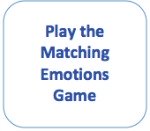Understanding Emotions
Through Imagery
By May Bleeker, updated 24 Feb 2022
When we think about human emotions or characteristics there is a tendency to think about the symbols (e.g. the names for things) rather than the things themselves.
So when we think or talk about 'fear' for example, we think about the word, and the meaning it holds for us. But understanding emotions like fear requires you to go back a bit and get into the feel of it. The feel of it comes first, the naming part is placed on top of this knowledge.
Just thinking about 'fear' (a word symbol standing for an emotion, or set of emotions) is not the same as really understanding what fear feels like for you.
Understanding Emotions Involves Feeling Them
Remembering a time when you were fearful can help you get in touch with the feel of it, as well as trying to get a sense of how your body felt when you were afraid. Simply being very present in the moment when you feel fear and examining how it feels will help the most. But lots of people don't like to do this.
Firstly, there is the difficulty with being in the moment when afraid - as strong emotions like fear and anger tend to sweep over you and cloud your awareness.
Then there is the discomfort that comes along with the feelings. The beating heart, the breathlessness, feelings of constriction or shakiness, the weakness in the legs or the trembling stomach. Most people like to get away from these sensations as soon as possible.
The interesting thing is that bringing consciousness to a feeling has the power to change it. Much more so than any other thing you could do. Giving an emotion attention and understanding emotions you feel can also help you come up with more realistic and practical ways to deal with whatever it is that is causing the feeling.
So part of becoming more emotionally self aware and understanding emotions is not so much talking about them, but actually taking opportunities to feel them, think about the sensations they come with and think about the connection between how things feel and the names we give to those feelings.
Naming Feelings
What a lot of people struggle with is giving a name to the feelings. The sensations come first and the naming happens afterwards. And like the oldies say: "There is many a slip twixt cup and lip." A lot of confusion happens around what the feelings actually are.
Now there are lots of theories about what feelings and emotions really are. Some say it is all just varying degrees of physical agitation and we give that agitation meaning by giving it a specific name (anger, sadness etc). But does intense love feel like anger? Does exhiliration feel like fear? Not to me it doesn't.
Others, like Candace Pert, say its all about peptides in the body, and different emotions are connected with different combinations of these peptides - which are like chemical messengers that flood your system whenever a feeling arises, telling the organs and other physical systems what to do.
All I'm interested in here is that there are a lot of subtle differences between feelings. And feelings can be multi-layered too. When it comes to understanding emotions, it gets complex.
A shortcut may be to call a feeling "fear" or "hurt", when in fact the feelings might be a multi-layered mixture of "anxiety, confusion and doubt" (which you call 'fear') or "disappointment, betrayal and anger" (which you call 'hurt').
Knowing these differences allows us a greater range of options to respond to situations and a greater palette of emotional colours with which to represent and understand our world and deal with it better.
Knowing you feel disappointed, betrayed and angry may lead you speak to the person about how your expectations were not met and how you felt let down. You might also realize that it is the disappointment and sense of betrayal that are making you angry. You might then express your anger and say in no uncertain terms how you would like to do things from now on.
This might lead you to ask for a new agreement for how to go forward together. If you just call your feelings 'hurt' you might find it impossible to work through these steps. Your expectations of the other person won't get expressed and the issue isn't resolved. Matters don't improve. So you keep on feeling disappointed, betrayed and angry until the relationship collapses and you move on to the next one. In which the same thing happens.
Knowing you are feeling anxious, confused and doubtful might help you realize that the confusion and doubt might be contributing to the anxiety. Knowing this you might take steps to clarify what is unclear and get more certainty in the areas of doubt - which will then reduce your anxiety. Whereas if you just call it 'fear' you might do what people do when fearful - retreat and withdraw. This doesn't solve the problem. It doesn't improve clarity. It doesn't remove doubt.
Can you see how understanding emotions and knowing the difference between them provides you with options for solving problems?
But how do we become more aware of these subtle differences between complex emotions?
One way is to create a visual image of your feelings.
Analog Drawings - Visual Images Representing your Emotions
In her book Drawing on the Artist Within, Betty Edwards writes about making 'analog' drawings of human traits or emotional states. These analog drawings are a visual representation of what that characteristic or emotion 'looks like' in line drawing form and they can really help in understanding emotions.
She tells her students to make these drawings without using any symbols (like hearts, smiley faces, raised fists etc). The analog drawing is supposed to consist of marks (or images) that make that 'thought' visible.
Making these kinds of marks or analog drawings can really help you get into the feel of the emotions in question. They can provide a more direct and pure representation of your thoughts and emotions than only words do. When looking at these drawings you might then be able to give them more appropriate word names and think about them more finely.
Understanding emotions might become just a little bit easier, when you 'see how they look' on the page.
The Vocabulary of Visual Language
In her work Betty Edwards found an interesting thing: the vocabulary of visual language shows "infinite variability within broad similarity".
While each person's analog of a particular emotion is likely to be unique and personal to them. Even so - across groups - there seems to be similarities in the marks people make to represent certain thoughts and emotions.
So a visual vocabulary is something we have in common. We can capitalize on this when it comes to understanding emotions and dealing with them.
Knowing your own feelings gives you insight into what others might feel in similar situations. Knowing this gives you insight into why things are happening in a particular way. It allows you to address the emotions involved in situations. And people who feel understood are more cooperative that people who feel ignored or misunderstood.
Its a common technique in conflict management to address the emotions, and then focus on the behaviour and problem-solving. If you jump right into a conflict situation where tempers are flying high, people are not always ready to solve the problem immediately. They are not always in 'logic mode' - they are most often in 'feelings mode'.
They first want to have their feelings heard. They want people to know that they are angry, upset, disappointed. If you acknowledge these feelings it becomes easier to move on to the next step: solving the problem.
This technique works very well in customer relations too. Nothing soothes an angry customer more than having their emotions acknowledged and getting the message that the person on the other end understands and accepts their feelings and wishes to help them solve the problem.
Try brushing off, minimizing or ignoring the emotions and see how the conflict escalates!
Draw Your Own Emotions
In the Matching Emotions Game I made some analog drawings to represent six emotions or sets of emotions. I tried to make the marks 'look like' the emotion feels to me.
As an exercise in understanding emotions, why not try this for yourself?
Here are the emotions for you to draw:
Anger
Confusion
Fear
Depression / Sadness
Peace / Calm
Happiness / Joy
Once you've made your marks then come back and play the Matching Emotions Game.
Tips
- Don't go look at my analog drawings until after you've done yours. For this to be truly useful you want to know what your emotions look like in line drawing form. You don't want your marks influenced by anyone else's. Make the marks that feel right and personal to you.
- To get into the groove of the emotion before making the marks really try to 'live yourself into them'. Remember when you last felt that emotion. Try to get the feel of it in your body. Let that feel of it come through your pencil and translate into the marks you make on paper.
- As Betty Edwards advises - don't use any symbols or pictures (like hearts, flowers, shooting stars, raised fists, smiley faces or teardrops). Only use line. Fast or slow, light or dark, hard pressure or light, smooth or rough, broken or flowing. Use whatever feels right for the emotion you're trying to draw.
- Don't try to visualize what your drawings must look like beforehand - let the image reveal itself and 'tell' you what the emotion looks like.
Related Pages
Return from Understanding Emotions through Imagery to Exploring Emotions throug the Senses.
Return from Understanding Emotions through Imagery to Doorway to Self Esteem home page













New! Comments
Your feedback is welcome: